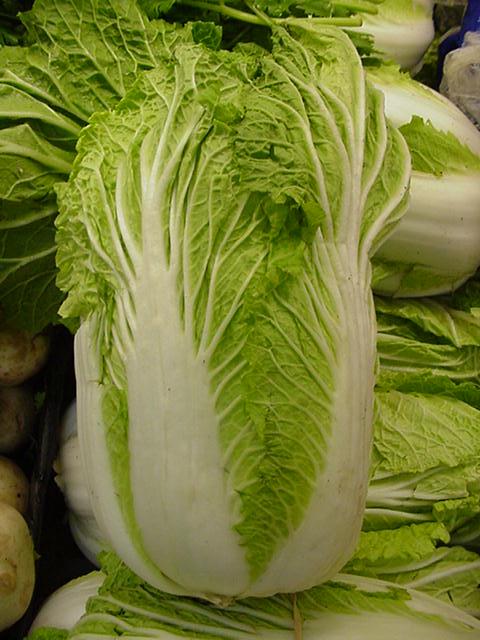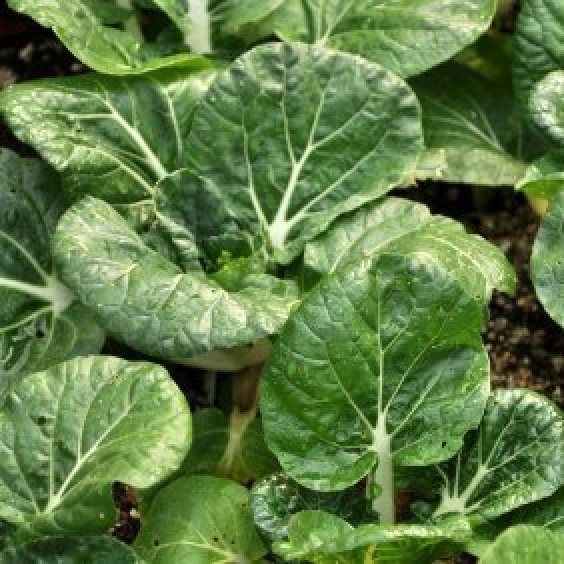Chinese cabbage#Varieties
Pak Choi - German: Bok Choy
Pak Choi (also bok choy, Chinese cabbage, bok choy, pak choi [ more used in Dutch ]; Brassica rapa chinensis syn. Brassica campestris chinensis), also known as German mustard cabbage or kale, is a close relative of Chinese cabbage. It forms loose heads with light leaf ribs. The leaves are darker green, similar to those of Mangold. Baby Pak Choi has smaller heads. Shanghai bok choy has green veining.
Origin and cultivation
In large scale Pak Choi is grown in Asia; the name derives from the Cantonese pronunciation of Chinese白菜, Pinyin bái Cai, Jyutping baak6 coi3, Yale baak6 choi3. Although the plant prefers the moist warmth of Asian climates, is a growing in temperate regions of Europe, even in your own garden, possible. Pak Choi is grown in the Netherlands since about 2004. The rapidly growing, heat- loving plant is cultivated in greenhouses and can be harvested after six to eight weeks.
Use
The plants form rosettes of short-stemmed, circularly arranged petals with bright, juicy Blattrispen. The rosettes are prepared cooked as a vegetable or raw. Pak Choi has a slightly mustardy, aromatic taste, faintly reminiscent of Chinese cabbage.
Pak Choi is used as a vegetable and salad and can be used in dishes in place of chard or spinach. In particular, the " baby bok choy " comes this from the cooking properties forth very close. Since Pak Choi contains a lot of moisture, it should be as fresh as possible processed.
Ingredients
Pak -choi contains a lot of potassium and carotene, calcium, vitamin C and some B vitamins, also also phytochemicals such as flavonoids, phenolic acid and glucosinolates (mustard oils). Latter is attributed to an antibiotic, so germicidal effect.







